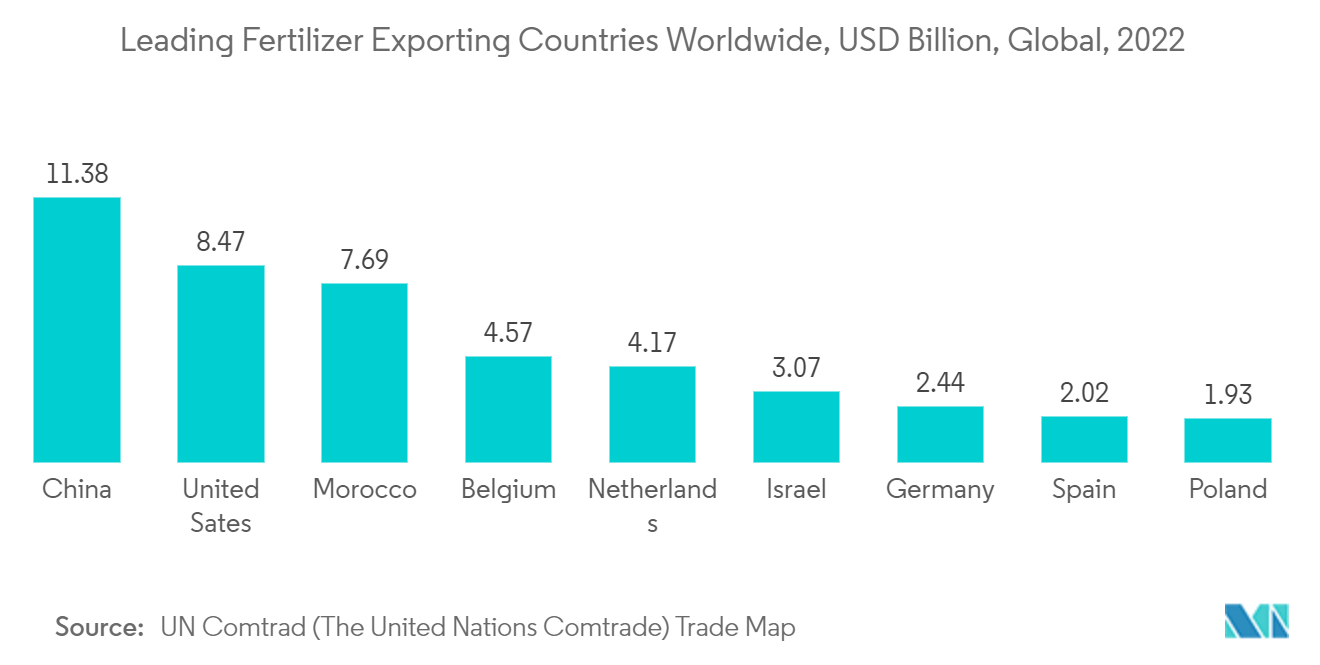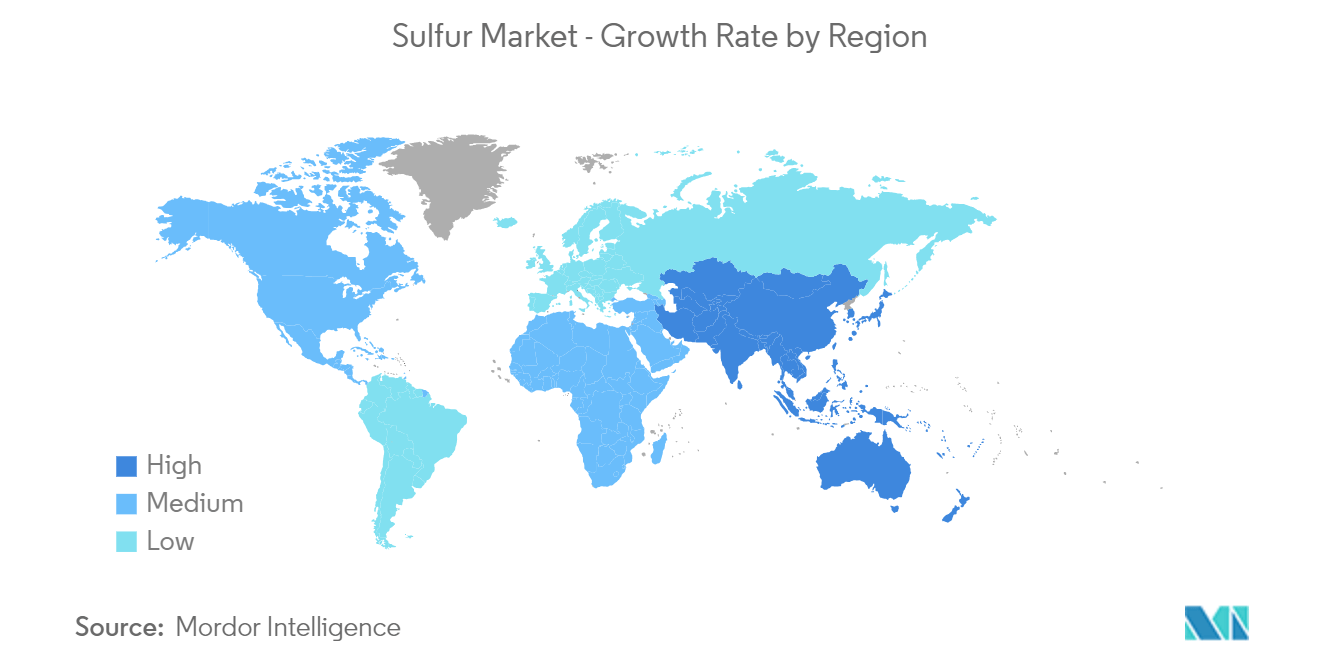Market Trends of Sulfur Industry
Rising Demand from the Fertilizer Manufacturing Sector
- Sulfur, being economical, is widely consumed in producing fertilizers such as calcium sulfate, which is well-known fertilizer for preventing nutrient runoff and soil erosion. It can kill insects, fungi, mites, and rodents. Therefore, sulfur has been registered for use in pesticides and fertilizers in the United States since the 1920s.
- Sulfur fertilizers are organic or synthetic ingredients put into the soil or plants, boosting growth and production by delivering critical plant nutrients. It is also used for increasing agricultural output, supplying extra nutrients to plants, and boosting plant development by improving soil fertility or replacing chemical components removed from the soil by previous crops.
- Moreover, sulfur fertilizer is considered a fourth macronutrient along with phosphorus, nitrogen, and potassium in the agriculture industry. Also, it has various functions in plants. Some of these significant roles are the synthesis of proteins and chlorophyll formation.
- According to the International Fertilizer Association, after declining by 2% in FY 2021 and 5% in FY 2022, a 3% recovery in global fertilizer consumption in FY 2023 to 194 Mt of nutrients (+5.9 Mt) is forecasted, returning consumption to just above the FY 2019 level.
- Also, the environmental policies related to fertilizer use, capacity expansions, extreme weather conditions, and geopolitical tensions have severely impacted fertilizer prices worldwide. However, fertilizer production in the Middle East is expected to hit 50 million tons by 2035.
- For instance, in September 2022, Nouryon, a Netherlands-based specialty chemicals company, acquired ADOB Fertilizers. This acquisition created an opportunity for ADOB to leverage a large global organization to advance to the next stage of global growth.
- Apart from that, various government initiatives for increasing fertilizer production in Asia-Pacific are driving the demand for sulfur.
- For instance, according to the Indonesian Fertilizer Producers Association (APPI), in February 2023, the government is in the process of fully launching the Pusri 3B fertilizer factory project that will replace the Pusri 3 and 4 fertilizer plants. This new project will be completed by 2030 and will have 16.87 million tons of fertilizer production capacity as compared to the current, which is 13.97 million tons.
- Therefore, considering the growth trends and production of fertilizers in different regions worldwide, the fertilizer industry is likely to dominate the market, which, in turn, is expected to enhance the demand for sulfur during the forecast period.

Asia-Pacific to Dominate the Market
- Asia-Pacific dominated the market due to the growing demand for sulfur in fertilizer and rubber processing from countries such as China and India.
- China is the leading global producer of sulfur in all forms. China is the world's leading producer of pyrites (source), which account for more than 50% of sulfur in all forms. The country is the leading sulfur importer, representing about 35% of the global imports, the bulk of which is used to manufacture sulfuric acid.
- Fertilizer production consumes about two-thirds of the sulfuric acid used in China. In the fertilizer industry, secondary fertilizers include calcium, magnesium, and sulfur. Yara China Limited and Nutrien Ltd are some of the companies that offer products related to secondary fertilizers.
- As per the National Bureau of Statistics of China, the production of sulfuric acid reached record highs in 2022 (consecutively rising for the third year) at 95.05 million metric tons, registering a growth of 1.3% from the output achieved in 2021.
- In terms of production,India produced 320.76 lakh metric tons of fertilizers during April-mid December of FY 2022-23, which contributed to a comfortable availability of fertilizers per the Ministry of Chemicals and Fertilizers. Fertilizer production has been gaining traction in the country due to favorable government policies. For instance, the subsidy outgo on P&K fertilizers in the country during 2022-23 rounded to INR 556.48 billion (USD 6.78 billion).
- India is one of the largest producers and consumers of rubber after China in the Asia-Pacific region. Despite being one of the largest rubber producers, the country imports a noticeable portion of the rubber from various countries to meet the local demand. India has about 6000 manufacturing units comprising 30 large-scale manufacturing units, 300 medium manufacturing scale, and around 5,600 small-scale and tiny sector manufacturing units. All these units manufacture more than 35,000 rubber products in the country, thus generating a substantial demand for sulfur
- About one-third of total global rubber consumption is natural rubber produced in plantations in Thailand, Indonesia, and Malaysia. Thailand is one of the largest producers and exporters of natural rubber globally.
- The aforementioned factors are contributing to the increasing demand for sulfur consumption in the Asia-Pacific region.


